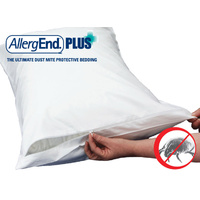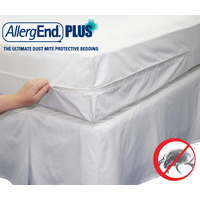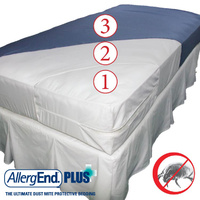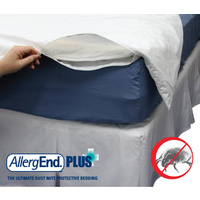Dust Mite Information
House Dust Mites: Tiny Creatures With a Big Impact on Allergy Sufferers
What Are House Dust Mites?
- Microscopic arachnids (related to spiders and ticks)
- About 0.2–0.5mm long — invisible to the naked eye
- Live up to 10 weeks; females lay 1–3 eggs daily
- They do not bite (unlike bed bugs)
.jpg)
Where Do They Live and What Do They Eat?
- Feed on dead skin flakes (especially when mouldy)
- Thrive in warm, humid, dark places like:
- Mattresses (up to 2 million mites!)
- Pillows, doonas, blankets
- Carpets and upholstered furniture
Why Are They a Problem?
- Their droppings contain allergy-triggering proteins
- Can cause or worsen asthma, eczema, and hay fever
- Up to 80% of asthmatics are sensitive to dust mites
- As many as 30% of Australians are affected by a dust mite allergy
How Can You Protect Yourself?
- Use AllergEnd Plus fully zippered dust mite covers on mattresses, pillows, and quilts
- Wash bedding in hot water (60°C or more)
- Keep indoor humidity below 50%
- Clean and vacuum regularly
AllergEnd Plus zip-up dust mite protective covers are designed to create a complete barrier between you, the dust mites and dust mite allergens. AllergEnd Plus covers help significantly to reduce your exposure to dust mite allergens.

 Overnight
Overnight




